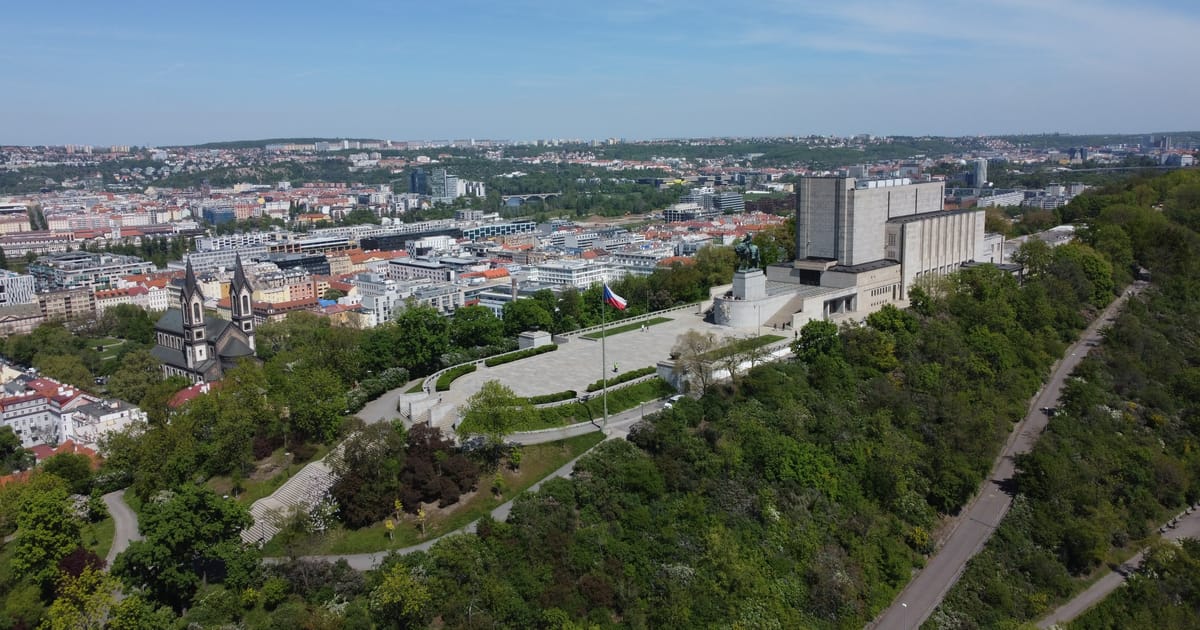Climbing up from the Žižkov side in late April or early May, you’re greeted by a lush park in full bloom. Trees burst with fresh green leaves, bushes fill the air with sweet spring fragrance, and paved paths wind their way toward the top. It’s a peaceful, almost meditative place, far removed from the bustle of Wenceslas Square or Old Town—even though they’re just a few tram stops away.
But Vítkov isn’t just about beautiful views and quiet strolls. This hill holds deep symbolic value in Czech history. On July 14, 1420, it was the site of a dramatic battle during the Hussite Wars. Jan Žižka, the legendary commander of the Hussite forces, led a small, outnumbered group of defenders who managed to repel a much larger army of crusaders sent by Emperor Sigismund. The victory saved Prague and gave strength and legitimacy to the Hussite movement, making the hill forever associated with Czech resistance and ingenuity.
That historical weight led to the idea, after Czechoslovakia gained independence in 1918, of building a national monument right here. In 1928, marking the 10th anniversary of the republic, the foundation stone was laid. Architect Jan Zázvorka designed a massive, modernist structure intended to honor the Czechoslovak legionnaires and house the Tomb of the Unknown Soldier. But construction was delayed by political turmoil, and during the Nazi occupation in World War II, the unfinished building was used merely as a military warehouse.
The monument took a very different turn under the Communist regime. In the 1950s, it was repurposed to serve ideological goals. From 1954 to 1962, it housed the embalmed body of Klement Gottwald, Czechoslovakia’s first Communist president, displayed in a glass coffin much like Lenin in Moscow. The building, originally meant to symbolize national pride and sacrifice, became a monument to the regime’s control.
After the fall of Communism in 1989, efforts were made to restore the monument’s original purpose. Gottwald’s mausoleum was dismantled, and by 2009, the site reopened under the administration of the National Museum. Today, it hosts exhibitions on Czech and Czechoslovak statehood, and the Tomb of the Unknown Soldier remains a central feature.
Whether you’re a history enthusiast, a seeker of quiet green spaces, or simply someone who enjoys a good view, Vítkov has something to offer. The rooftop terrace of the National Monument offers an official viewpoint, but honestly, the view from right in front of the towering bronze statue of Jan Žižka is just as breathtaking.
If you’re looking to explore Prague beyond the usual landmarks, Vítkov is absolutely worth the climb.
Location:
Vítkov Hill, Prague 3 – between the districts of Žižkov and Karlín
Height:
Approximately 270 meters above sea level
Key Landmark:
Statue of Jan Žižka – one of the largest bronze equestrian statues in the world
Historical Significance:
Site of the Battle of Vítkov (July 14, 1420), where Jan Žižka led Hussite forces to victory over crusaders
Viewpoint:
Public rooftop terrace offers panoramic views of Prague (ticketed entry); free view from base of the statue also recommended
How to get there:
Easily reachable by foot from Florenc, Hlavní nádraží, or Žižkov; closest tram stop: Husinecká
Website:
www.nm.cz (National Museum site with info on exhibitions and opening hours)
